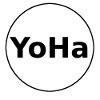
Book Synopsis
Title: Aluminium
Description: A futurist search-engine writes the social history of aluminium.
Graham Harwood
Full colour
120 to 160 pages
Large, format to be determined
Audience: Contemporary art audience. Visitors to Manifesta.
This book project is part of Graham Harwood’s major contribution to the forthcoming Manifesta and commissioned for the abandoned 1930's Alumix building – a Fascist-era factory in Bozen / Bolzano – South Tyrol. The book proposes a new model for publishing and its digitisation. Driven by a piece of custom software, the book and installation are generated as different iterations of the same distinctive project.
The book as machine. The book as search engine
1. Special software searches the internet and private databases extracting links between fascism, futurism, aluminium and the contemporary.
2. The results of the searches are shown on an immense wall collage whose construction is driven by an algorithm/futurist recipe based on the 1910 Technical Manifesto for Painting and other sources.
3. The book, including cover, is one large image – cut up to make the pages of the book. At Manifesta the book will be seen as a whole image.
Keywords: fascism, futurism, aluminium
Fascists, drawing on Futurist aesthetics, made Aluminium the national metal of Italy. Aluminium embodied their image of modern technological life, signifying both both speed and strength. Marinetti was "the caffeine of Europe". Aluminium was the fascist metal and in 1933 in anticipation of cheap Ethiopian Coffee, Alfonso Bialetti fashioned and crafted the first Aluminium Stovetop espresso coffee maker the Moka Express. On October 3, 1935, Italy attacked Ethiopia from Eritrea and Italian Somaliland without a declaration of war.
As well as espresso, Futurism advocated the consumption of metal bolts and engine oil to turn men into machines. In 2008 it will be 100 years since Marinetti set out the Futurist manifesto. Marinetti wrote that the movement would celebrate "the vibrant nightly fervour of arsenals and shipyards blazing with violent electric moons". He believed in speed, machines and violence. Aluminium takes futurist logic and turns it in upon itself through the high-technology of today.
Aesthetic approach
Montage was the main gift of twentieth century art, valuing fragmentation and conflict over continuity and organic unity - ripping images out of their contexts and sticking them together to reveal new images, meanings and poetics from the interplay. But do networked images in their proliferation and multiple contexts undermine the assumptions of montage or reinforce them?
The question is not what the network does to pictures: what do pictures want from the network?
Aluminium will be a mosaic image created by Harwood’s custom software. The software is designed to generate, edit and continuously update a composite image made up of out of the results of internet searches guided by various keywords. Aluminium will be built up as a composite 'networked image' out of the images, text and addresses. Key phrases and compositional forms guiding the algorithmic design will come from Futurist manifestos, documents found at the Alumix building, from the history of aluminium and the social history of the factory and the industry it served.
 bnr#40 => Invisible Airs, Council Chamber Room, Bristol, UK
bnr#40 => Invisible Airs, Council Chamber Room, Bristol, UK